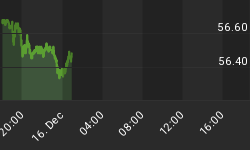Overnight the U.S. Dollar reached a new 15-year low versus the Japanese Yen on uncertainty regarding a leadership election in Japan. At issue was whether the current Prime Minister Kan would keep his job or not. Kan has been a staunch supporter of intervention. When it was all over, Kan was able to keep his job, but the December Japanese Yen has barely backed down from its overnight high at 1.2048.
The inability to break the Japanese Yen shows a lack of confidence in the government and the Bank of Japan's ability to pull off a successful intervention. By taking the Yen to a new high, investors are saying the country's leaders lack the clarity and conviction to weaken the currency.
The Dollar is trading better against most majors with the exception of the Japanese Yen, indicating that traders may take risk off the table today after yesterday's strong demand for risky assets driven rally.
Demand for higher risk assets helped push December Treasury Bonds lower on the opening on Monday, but technical factors helped turn this market around, triggering a strong intraday rally and a higher finish. T-Bonds fell sharply lower early in the session after an agreement by global regulators on the size of bank capital reserves and strong Chinese economic data increased appetite for higher yielding assets.
Over the week-end, global banking regulators agreed to close to triple the size of capital reserves that banks must hold against losses.
On Saturday, China posted a report which showed industrial production was stronger-stronger than expected. Chinese retail sales also rose while August inflation of 3.5% was reported at the pre-report estimate. This helped squelch rumors of another round of monetary policy tightening by the Chinese central bank.
The money which left the Treasury and Gold markets last week was put to work this morning in the global equity markets.
December Treasury Bonds traded higher at the mid-session after successfully testing a key technical area early in the session. Short traders then took the opportunity to take profits on their positions following a completed .618 correction of the 124'22 to 135'19 range. The completed retracement triggered a short-covering rally which drove the market back to 50% of this range to 130'17.
The higher close on Monday helped to set up a daily closing price reversal bottom which could trigger the start of a retracement of the 133'12 to 129'05 range. This would send the market back to 131'09 to 131'24. A downtrending Gann angle from the 135'19 top indicates that this is likely on September 15 or 16.
From a bearish traders perspective, the market is in a downtrend which means rallies are likely to be sold. In addition the daily swing chart indicates that 128'05 is the next downside target on September 17. An uptrending Gann angle from the 124'22 bottom indicates that price squares time at 129'11 on September 17 also. This gives bearish traders two potential downside targets by the end of the week.
Fundamentally, the rally in the Treasury market may have taken place because many investors still believe that the only way the T-Bonds will begin a substantial break will be after the U.S. economy gets back on track. Some also didn't believe the rally in the equity markets and that most of the rally was short-covering triggered by the surprise announcement from the banking regulators.
Technically, today's short-covering rally indicates that traders aren't in a hurry to sell out their positions on weakness. This means that the T-Bonds may have to go through a series of retracements in order to attract fresh sellers. Watch for a zig-zag pattern to begin on the charts. This will be a strong indication that new shorts are beginning to enter on rallies.
Overnight the Treasury Bonds are trading higher, aided by stronger demand for safety and a lower equity market.
















